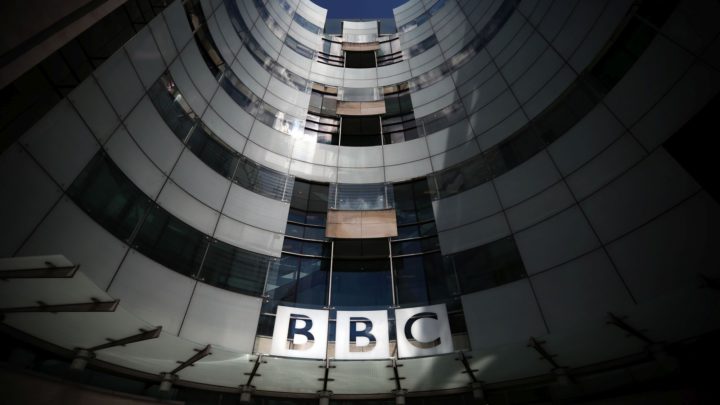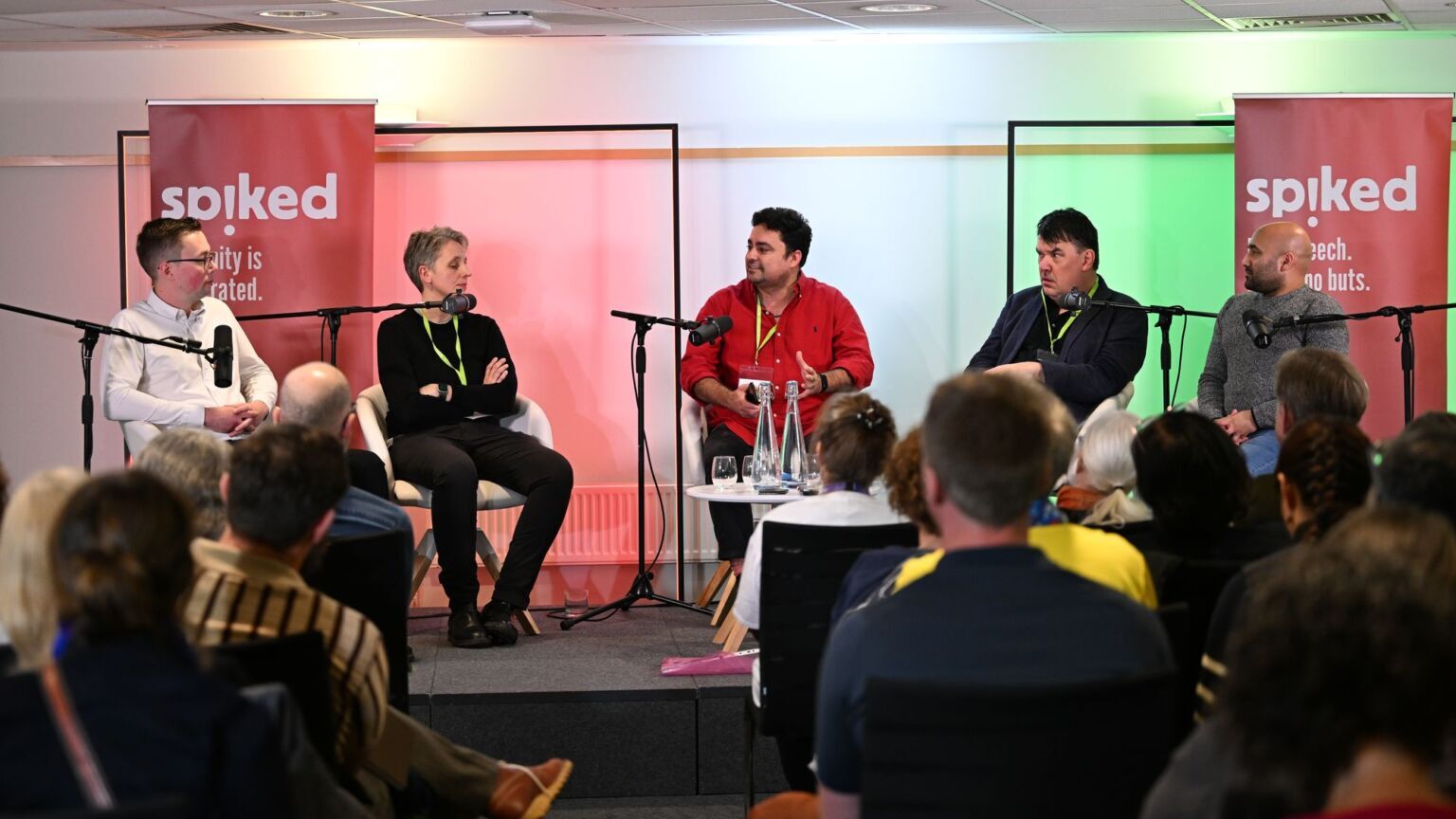This is how MAGA falls
A combination of internal divisions and economic struggles could doom Donald Trump's movement.

Want unlimited, ad-free access? Become a spiked supporter.
As in his first term, Donald Trump now presides over a visibly sinking ship as his approval ratings slide. MAGA, a movement built around the personality of one man, never amounted to a coherent political force or even a workable coalition. Claims that Trump and his lieutenants won a mandate in 2024 and then ‘saved’ the country were always delusional. After all, his margin was thin, as was that of his party in Congress.
Three forces are killing MAGA, perhaps even pushing the US in a distinctly socialist direction. The first are the internal divisions, which are growing ever-more pronounced and will only intensify as an aging Trump becomes an ever-lamer duck, particularly if Democrats romp to victory again in the 2026 midterms.
The second, arguably more serious, weakness lies in the loss of the Latino vote – a growing political force in many states. Many Latinos shifted to Trump in 2024, but the brutality of the ICE crackdown, reported with typical zeal by his media foes, has eroded his appeal, as seen in results from New York, New Jersey and Virginia.
The third, and most fatal, factor is the economy, whose troubles may have begun under Biden but now belong to Trump. Pressured by investors and accelerated by the rise of artificial intelligence, the US has produced an economy in which major companies, particularly in tech, are shedding workers even as they post record profits. It’s not a good look, especially given that under Trump the 10 richest Americans grew richer by an astounding $700 billion.
The ideological divide within MAGA has grown increasingly harsh. Trump is not, at heart, a professional politician. Rather, he is a blend of New York developer and carnival barker. His uneasy alliance with ‘tech bros’, Wall Street insiders and fervent right-wing nativists was never stable. It was held together mostly by Trump himself – and by the awfulness of the Democrats.
Even as he strikes a populist pose, some people influential in MAGA flirt with ideas like eugenic Darwinism and a permanent ruling aristocracy. Others within MAGA embrace isolationism and attacks on minorities, particularly Jews. Trump rejects such notions, but too many top GOP figures, argues Senator Ted Cruz, seem terrified of alienating the odious Tucker Carlson to do so.
At its worst, MAGA’s hardest faction embraces openly racist groups such as the Proud Boys. There’s also a class element at play. Carlson, himself a product of the upper class, claims to speak for what he sees as ‘core’ Americans – basically middle-class white people – some of whom view immigration and cultural change as existential threats.
Sadly, this faction could define MAGA after Trump. Its likely vehicle is Trump’s heir apparent, JD Vance. I spent time with the vice-president before his Trumpist conversion and he once seemed genuinely sensitive to the struggles of the poor, having come from that world himself. Now he seems unwilling to denounce far-right anti-Semites and, despite being married to a Hindu, appears intent on morphing MAGA into a white Christian nationalist movement.
As a political strategy, this approach has limited prospects, given the demographic decline of the white population. Until recently, MAGA gained ground among growing groups – especially Asians and Latinos. Latinos, in particular, represent a vast and expanding electoral force. Since 1970, they’ve risen from five per cent to roughly 20 per cent of the US population. Between 2010 and 2023, they accounted for 56.3 per cent of total population growth. The Census Bureau projects they’ll expand by another 31million between 2025 and 2060.
In 2024, Trump won an unprecedented share for a Republican of this critical bloc. Many Latinos favoured his early measures to secure the border and expel criminal aliens. But the crackdown on long-settled workers – people who’ve raised families and bought homes – has deeply unsettled even right-leaning Latinos. Few people are unmoved by the sight of families being herded into vans and sent away.
MAGA activists may not realise it, but Latinos are not a marginal community separated from mainstream America. The vast majority speak English – even in multicultural Los Angeles, barely one in five Hispanics from non-immigrant households speaks Spanish at home, while three-fifths of third-generation Latinos speak only English.
A third, and likely most critical, challenge lies in long-term economic shifts. The rise of tech oligopolies has ushered in a neo-feudalist future. Libertarian ideologues and their tech backers hail AI as the dawn of a new golden age, yet they seem blind to what’s happening on the ground.
This is reflected in California, home to both the richest people in the world and the nation’s highest concentration of poverty. Under Trump’s first administration, working-class wages – a critical concern for Latinos – rose significantly. Today, the gap between the very rich and everyone else is widening again.
High-profile extravagance by the oligarchic elite, from Jeff Bezos’s $50million wedding to the endless parade of nine-figure Manhattan apartments, does little to inspire faith in unrestrained capitalism. Even the highly educated, burdened by debt and schooled in left-leaning academia, see their career prospects shrinking. Despite soaring tech profits, AI tools have fuelled layoffs at Amazon, Intel, Meta and Microsoft. Among recent college graduates, computer-science majors now face among the highest unemployment rates, according to a report from the Federal Reserve Bank of New York.
Even in San Francisco – the supposed epicentre of the AI boom – city economist Ted Egan notes that new startups have not offset layoffs at big tech firms. The spoils of AI will likely flow to investors, a few entrepreneurs and well-compensated ‘genius’ programmers, leaving little opportunities for the middle- and working-class Californians.
Meanwhile, young urbanites face crushing costs for food and housing. New Yorkers pay the nation’s highest share of income for housing and have by far the lowest homeownership rate – half the national average. Job growth skews to the low end of the pay scale; since 2020, New York has lost 76,000 middle-income jobs, while low-income positions have surged.
Zohran Mamdani’s victory in the New York mayoral race reflects these pressures, mobilising educated professionals – including some earning over $200,000 a year. His brand of socialism may not spread far beyond the Hudson, but even more moderate Democrats, California’s Gavin Newsom and the ‘Abundance’ movement among them, see cost-of-living issues as a ticket to national power.
Whether their solutions are credible may not matter. History shows that economic pain drives voters to extremes and fuels collectivist sentiment, whether on the left or the right. In today’s climate, even traditional liberals face purges. New York’s left is preparing to challenge and push out figures like Representative Richie Torres for deviations from party orthodoxy, in this case over Israel. Even Senate minority leader, Chuck Schumer, seems destined to be forced out – perhaps replaced by the left’s ‘it girl’, Alexandria Ocasio Cortez (AOC).
Some on the right hope the far left will so tarnish the Democratic brand that voters will continue to swallow MAGA rule into the next decade. Certainly, the youth-driven push to limit incomes and wealth could keep some corporate types clinging to MAGA. And the rise of figures like AOC – now the House’s top fundraiser – may frighten business donors, but could also force moderate Democrats to refocus, as Mamdani did, on economic rather than cultural issues.
But unless Democrats start quoting Lenin and Mao, it’s hard to see the already fractured MAGA coalition addressing these challenges effectively. Trump’s corporate allies already chafe at limits on H-1B visas or at policies confronting China, from which many profit. Nor is Trump likely to antagonise Wall Street further by curbing large firms’ ability to buy up single-family homes.
Worse for MAGA, many of Trump’s signature initiatives – on trade, defence and border security – won’t deliver visible benefits before the 2026 or 2028 elections. The promise of new factories and high-tech investment could yield blue-collar jobs eventually, as Nvidia’s Jensen Huang predicts, but not soon enough to matter.
Even the most deluded Trump loyalists should recognise that progressives still command most of the nation’s cultural and informational institutions – especially education and media. As AI systems draw primarily on left-leaning sources, this influence will deepen. Universities, NGOs and tech firms may temporarily appease Trump, but once MAGA weakens, they’ll unleash their vast resources against it.
In the end, MAGA is likely to lose out, even though Trump’s policies may shape the nation’s direction for years, a bit like an unpleasant but necessary enema. Unless the GOP rediscovers its Reaganite optimism and turns from vengeance to economic renewal, America’s future will likely belong either to the radical socialists or to the oligarch-friendly technocrats. Neither of which would be a desirable outcome.
Joel Kotkin is a spiked columnist, a presidential fellow in Urban Studies at Chapman University in Orange, California, and a senior research fellow at the University of Texas’ Civitas Institute.
You’ve read 3 free articles this month.
Support spiked and get unlimited access.
Help us hit our 1% target
spiked is funded by readers like you. It’s your generosity that keeps us fearless and independent.
Only 0.1% of our regular readers currently support spiked. If just 1% gave, we could grow our team – and step up the fight for free speech and democracy right when it matters most.
Join today from £5/month (£50/year) and get unlimited, ad-free access, bonus content, exclusive events and more – all while helping to keep spiked saying the unsayable.
Monthly support makes the biggest difference. Thank you.











Comments
Want to join the conversation?
Only spiked supporters and patrons, who donate regularly to us, can comment on our articles.